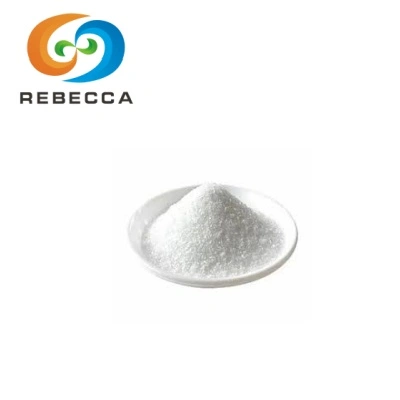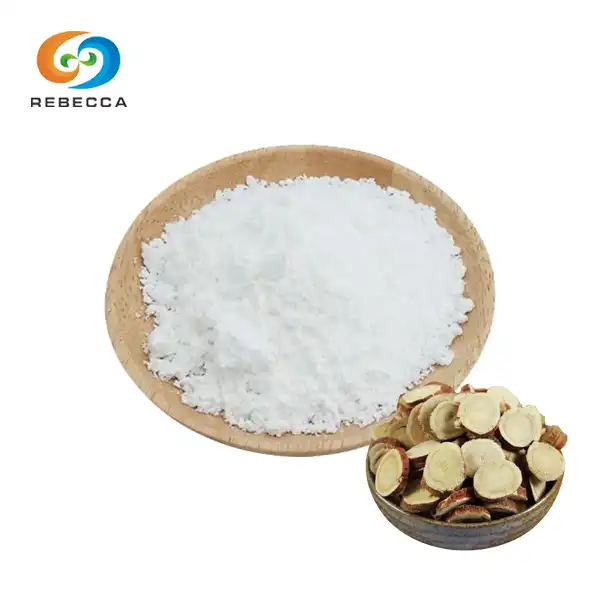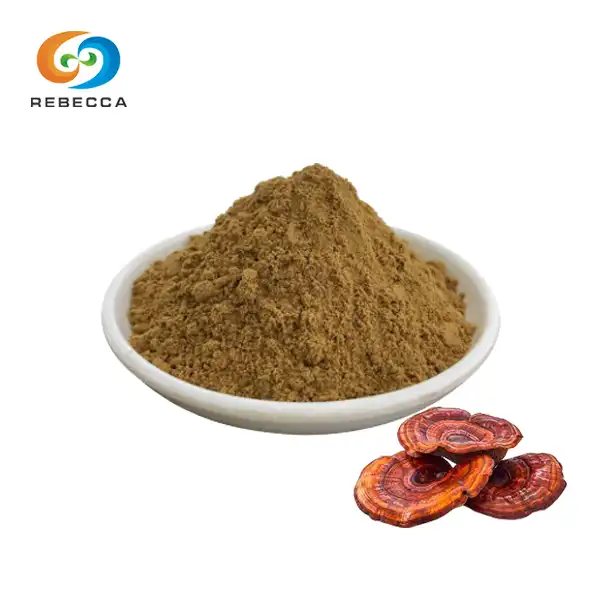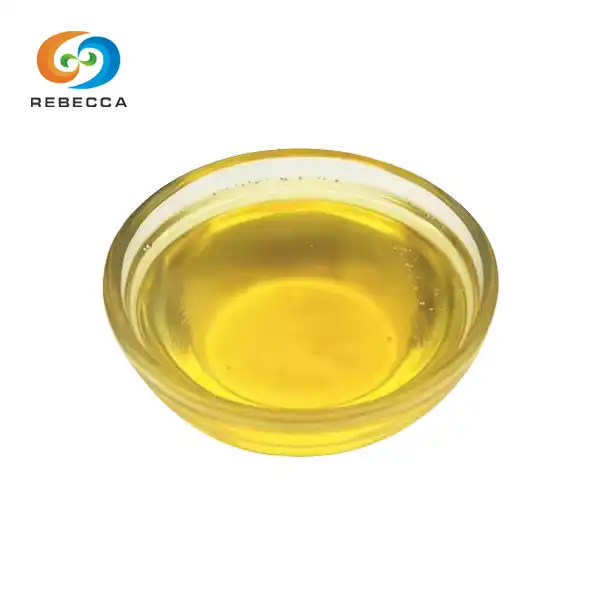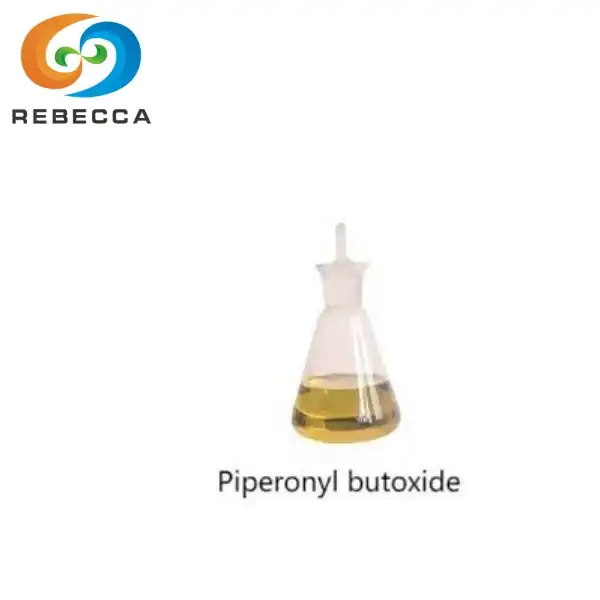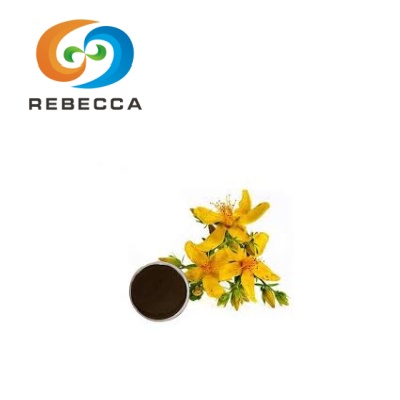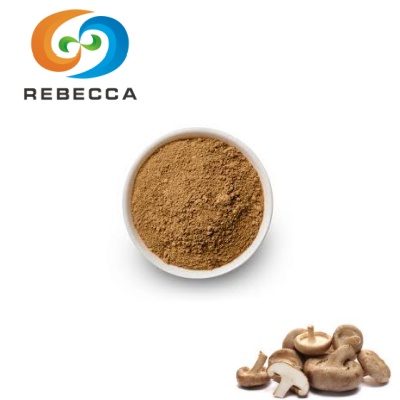Can you take resveratrol and pterostilbene together?
When it comes to antioxidant supplements, few compounds have garnered as much attention as resveratrol and pterostilbene extract. These naturally occurring stilbenes have captured the interest of researchers and health enthusiasts alike due to their impressive biological activities and potential health benefits. But here's the question that many people find themselves asking: Can you safely combine these two compounds?
Product Name: Pterostilbene extract, Pterostilbene Powder
CAS No.: 537-42-8
Specification: Pterostilbene , Min 99%, HPLC.
Test Method: HPLC
Latin Name:Vaccinium uliginosum
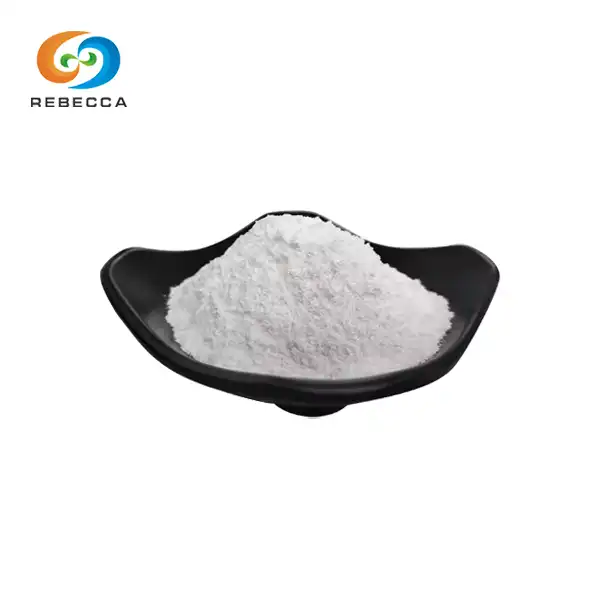
Chemical Structure and Mechanisms
To truly appreciate why resveratrol and pterostilbene work so well together, we need to dive into their molecular architecture. Both compounds share a similar backbone structure, but their subtle differences create distinct biological profiles that complement each other in fascinating ways.
Resveratrol, chemically known as 3,4',5-trihydroxystilbene, contains three hydroxyl groups that give it powerful antioxidant properties. This molecule is relatively small and can easily cross cellular membranes, but it faces a significant challenge: rapid metabolism by the liver. When you consume resveratrol, your body quickly processes it through phase II detoxification pathways, resulting in a relatively short window of biological activity.
Pterostilbene, on the other hand, is 3,5-dimethoxy-4'-hydroxystilbene – essentially resveratrol with two of its hydroxyl groups replaced by methoxy groups. This seemingly minor structural modification creates a compound with dramatically different pharmacokinetic properties. The methoxy groups make pterostilbene more lipophilic (fat-loving), which enhances its ability to penetrate cell membranes and resist rapid metabolism.
These structural differences translate into practical advantages when using pterostilbene extract. Studies have shown that pterostilbene has a half-life that's four to seven times longer than resveratrol, meaning it remains active in your system for extended periods. This extended presence allows for more sustained biological effects, making pterostilbene particularly valuable for processes that require consistent cellular signaling.
Both compounds operate through similar cellular pathways, including the activation of sirtuins – a family of proteins often called "longevity genes." They also influence AMPK (adenosine monophosphate-activated protein kinase) pathways, which play crucial roles in cellular energy metabolism. However, their different absorption and metabolism patterns mean they can provide complementary timing of these beneficial effects.
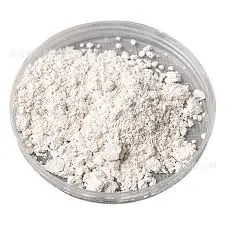
Potential Synergistic Effects
The concept of synergy in nutritional compounds suggests that the combined effect of two substances can be greater than the sum of their individual effects. When it comes to resveratrol and pterostilbene, emerging research suggests that this principle may indeed apply, creating opportunities for enhanced health benefits through their combined use.
One of the most compelling areas where synergy may occur is in cardiovascular protection. Resveratrol's rapid absorption and immediate effects on endothelial function can be complemented by pterostilbene's longer-lasting presence and sustained anti-inflammatory activity. This combination may provide both acute protective effects and long-term cardiovascular support that neither compound could achieve alone.

Research into pterostilbene extract has revealed its particular strength in supporting healthy cholesterol metabolism and blood sugar regulation. These effects, combined with resveratrol's well-documented benefits for heart health and circulation, suggest that the two compounds may work together to provide comprehensive cardiovascular support. The immediate vasodilatory effects of resveratrol paired with the sustained metabolic benefits of pterostilbene could create a more complete protective profile.
Cognitive health represents another area where synergistic effects may be particularly valuable. Both compounds can cross the blood-brain barrier, but their different residence times in neural tissue may provide both immediate neuroprotective effects and long-term brain health support. Resveratrol's rapid action on brain-derived neurotrophic factor (BDNF) production, combined with pterostilbene's sustained anti-inflammatory effects in neural tissue, could theoretically provide more comprehensive cognitive support.

The antioxidant capabilities of these compounds also complement each other effectively. While resveratrol provides immediate free radical scavenging activity, pterostilbene's longer presence in tissues may help maintain antioxidant defense systems over extended periods. This temporal complementarity could be particularly beneficial during periods of increased oxidative stress or in supporting recovery from physical exercise.
Dietary vs. Supplement Sources
Understanding the difference between obtaining these compounds through diet versus supplementation is crucial for making informed decisions about how to incorporate them into your health regimen. While both approaches have merit, they offer distinctly different advantages and limitations that are worth exploring in detail.
Dietary sources of resveratrol are relatively well-known, with red wine, dark berries, and red grapes being among the most concentrated natural sources. However, the amounts typically consumed through diet are quite modest compared to research doses. A glass of red wine might contain 1-2 mg of resveratrol, while studies often use doses ranging from 100-500 mg daily. This significant gap between dietary intake and research doses highlights one of the challenges of relying solely on food sources.
Pterostilbene occurs naturally in blueberries, but in even smaller quantities than resveratrol in wine. You would need to consume several cups of blueberries daily to achieve the amounts used in clinical studies. This practical limitation has driven interest in pterostilbene extract as a more concentrated and reliable source of this beneficial compound.
Dietary sources do offer some unique advantages, however. When you consume these compounds as part of whole foods, you also receive a complex matrix of other beneficial nutrients that may enhance absorption and provide additional health benefits. The anthocyanins in blueberries, for example, may work synergistically with pterostilbene, while the other polyphenols in red wine might complement resveratrol's effects.
The bioavailability question becomes particularly relevant when comparing dietary and supplement sources. Food matrices can sometimes enhance the absorption of certain compounds through various mechanisms, including the presence of fats that aid in the absorption of lipophilic compounds like pterostilbene. However, they can also contain compounds that interfere with absorption or compete for the same transport mechanisms.
Supplement forms offer several advantages for those seeking therapeutic doses of these compounds. Standardized pterostilbene extract products can provide consistent, measurable amounts of the active compound, making it easier to achieve research-supported dosing levels. Additionally, supplements can be formulated with absorption enhancers or combined with complementary compounds to optimize bioavailability.
Quality considerations become paramount when choosing supplement sources. The supplement industry varies widely in terms of manufacturing standards and product quality. High-quality pterostilbene extract should be standardized to specific purity levels and tested for contaminants. Third-party testing and certification can provide additional assurance of product quality and potency.
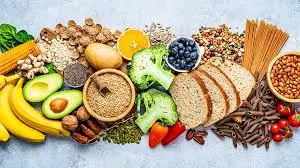
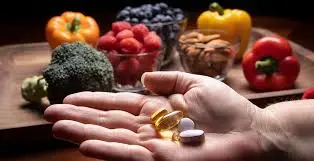
Rebecca: Pterostilbene Extract For Sale
At Rebecca Bio-Tech, we understand the growing demand for high-quality pterostilbene extract among health-conscious consumers and researchers. As a trusted supplier in the nutraceutical industry, we're committed to providing premium-grade pterostilbene that meets the highest standards of purity and potency.
Our pterostilbene powder is sourced from Vaccinium uliginosum L. and standardized to contain a minimum of 99% pure pterostilbene, as verified through high-performance liquid chromatography (HPLC) testing. This exceptional purity level ensures that you're getting a product that delivers consistent results and maximum bioavailability.
Whether you're a supplement manufacturer looking for reliable raw materials, a researcher conducting clinical studies, or a practitioner seeking therapeutic-grade compounds for your patients, Rebecca Bio-Tech is here to support your needs with professional service and competitive pricing.
Ready to learn more about our products or discuss your specific requirements? We'd love to hear from you. Contact our team today at information@sxrebecca.com for detailed product specifications, pricing information.
References
1. Kapetanovic, I. M., et al. (2011). Pharmacokinetics, oral bioavailability, and metabolic profile of resveratrol and its dimethylether analog, pterostilbene, in rats. Cancer Chemotherapy and Pharmacology, 68(3), 593-601.
2. McCormack, D., & McFadden, D. (2013). A review of pterostilbene antioxidant activity and disease modification. Oxidative Medicine and Cellular Longevity, 2013, 575482.
3. Riche, D. M., et al. (2013). Analysis of safety from a human clinical trial with pterostilbene. Journal of Toxicology, 2013, 463595.
4. Baur, J. A., & Sinclair, D. A. (2006). Therapeutic potential of resveratrol: the in vivo evidence. Nature Reviews Drug Discovery, 5(6), 493-506.
5. Rimando, A. M., et al. (2005). Resveratrol, pterostilbene, and piceatannol in vaccinium berries. Journal of Agricultural and Food Chemistry, 53(12), 5156-5161.
